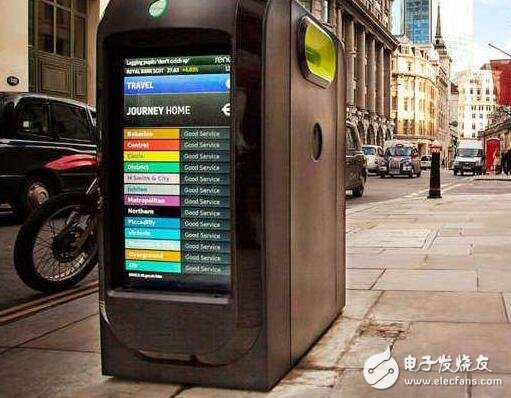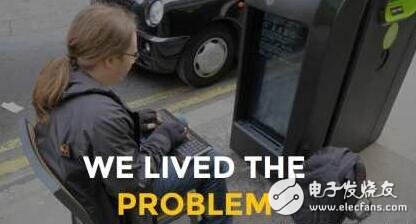It's trivial to connect embedded devices to the Internet, but once those devices are deployed, there are issues that are less likely to resolve...
After the freshness of the Internet of Things (IoT), the reality of the market is a group of investors, marketers and design engineers who are quickly involved in it...
But the underlying technologies and ecosystems designed to support the elusive IoT market are still too immature, leaving most companies and investors unable to recoup their profits; in fact, rumors show that people who want to start businesses in the Internet of Things, Beginning to face intuition from the investment community. In short, the recoil of the Internet of Things began to appear.
In this context, a London-based 4-year-old startup, Resin.io, has announced that it has received $9 million in guarantees from large companies such as DFJ, GE Ventures, Ericsson and Aspect Ventures. The technology available at Resin.io reflects the challenges that are currently rarely discussed but are threatening IoT builders and designers.
It's trivial to connect embedded devices to the Internet, but once those devices are deployed, there are fewer problems that can be solved—that is, how to manage and remotely monitor those millions of Deployment of IoT devices.
Want to know more about IoT & embedded system key technologies? Come and join the Tech Taipei seminar for free!
IoT devices require over-the-air firmware and software updates, and: "It needs to be done quickly and safely," said Bryan Hale, general manager of Resin.io, in an interview with EE TImes. Security vulnerabilities must be patched in hours rather than weeks, providing new features when customers need them whenever and wherever they need them, and providing consistency and reliability for large-scale networking devices.
Hale said that Resin.io's mission is to make the code on the remote device easy to deploy, update and maintain; the company basically uses Linux software containers and other open technologies to simplify the development of engineers, Deployment and management of IoT software.
Dachang began to pay attention to the problem of software update of IoT devices
Alexandros Marinos, founder and CEO of Resin.io, believes that funding from big companies such as GE Ventures and Ericsson reflects what is currently missing in the industrial IoT market, and the company's technology is filling these gaps.

“To promote the Industrial Internet of Things, you need the ability to deploy and manage software in a remote environment;†Sam Cates, director of GE Ventures, General Electric's investment arm, said in a statement: “Resin.io plays a unique role. Bringing speed and security to the Industrial Internet of Things."
Diomedes Kastanis, vice president and head of technology and software solutions at Ericsson, believes that traditional over-the-air (OTA) software updates are increasingly complicated by the burden of hundreds of millions of networked devices. Obviously not enough: "We are very happy to support Resin.io and help the entire industry to have the necessary capabilities to deploy new software containers securely anytime, anywhere."
Hale said that looking at today's IoT market: "There are already many IYs in the form of DIY devices, they will not update firmware or software, and we have seen many terrible scenarios."
The industrial IoT market cannot bear the risk of ignoring the weaknesses of networked devices; for example, in a small factory, manufacturers need to process large amounts of data and respond to unpredictable conditions in daily operations, they can act as soon as possible for IoT devices Do you need to update the necessary programs? After all, being able to monitor the condition of the plant in real time is the key to making the networked factory smarter.
Valuable experience with "Smart Trash"
The same considerations apply to devices such as digital signage, point-of-sale systems, and interacTIve kiosk; in fact, Resin.io also knows about some of the smart trash cans for the London 2012 in London. Bins)" things.

Wisdom bins that once appeared on the streets of London
The trash can has an LCD display embedded on each side and has Wi-Fi capability; its original idea is to allow those screens to continuously display different information, from weather forecasts to stock prices, but because of privacy concerns (once any nearby When a mobile phone or other device turns on Wi-Fi, the trash can records its MAC address. This smart trash can is finally shelved.
Although the smart trash can has died, it has spawned the Resin.io company, which was originally a team of elite doctors with a doctoral degree, and experienced the software in the embedded system because of the smart trash can project. How difficult is it; in particular, an embedded system such as a smart trash can has no obvious user interface and has limited processing performance.

PhD engineer trying to repair smart trash can software
(Source: Resin.io)
Simplify embedded device application development/maintenance programs
Resin.io's team found that writing an IoT application is not a simple task; Marinos said: "It's not the same as writing a web application." The Internet of Things uses embedded devices with limited memory capacity and processing performance. It is a built-in special microprocessor or microcontroller, and the CPU architecture of various IoT devices is very different.
IoT application developers must always worry about how to keep the IoT hardware device running while keeping the application updated; if this involves the Industrial Internet of Things, the program includes setting up the operating system, establishing a secure local area network, Configure some records and view the login method, as well as some methods for installing a new version of the program on the device... and more.

Resin.io's role in embedded application maintenance
(Source: Resin.io)
But Resin.io thinks: "Why not bring the intuitive feeling of the cloud to the embedded world?" And the company has found the answer through best practices from both the Internet and embedded worlds.
Resin.io extends the Linux software container to the new processor architecture, including i386, ARMv6 and ARMv7; the Linux software container is a working system level virtualization method for use on a control host using a single Linux kernel. Execute multiple isolated Linux systems.
The company uses a decentralized version of the system called Git that facilitates updates, executions, and integration testing; during this time, the system can maintain Docker, an application that automates deployment of soft containers. The openness of the program's open project - compatibility.
Marinos explains: "We bring the web development and deployment process to the hardware world;" With tools like Git and Docker, Resin.io gives software developers the ability to seamlessly update all embedded Linux devices. At the same time, Resin.io can handle cross-compilaTIon, device monitoring, VPN, and log collecTIon, so application developers can focus on the product without worrying about infrastructure.
Power 12W ,output voltage 3-12V, output current Max 1A, 6 dc tips. We can meet your specific requirement of the products, like label design. The material of this product is PC+ABS. All condition of our product is 100% brand new.
Our products built with input/output overvoltage protection, input/output overcurrent protection, over temperature protection, over power protection and short circuit protection. You can send more details of this product, so that we can offer best service to you!
12W Wall Adapter, 12W Wall Power Supply,12W Power Cord In Wall, 12W Wall Power Adapter
Shenzhen Waweis Technology Co., Ltd. , https://www.waweis.com